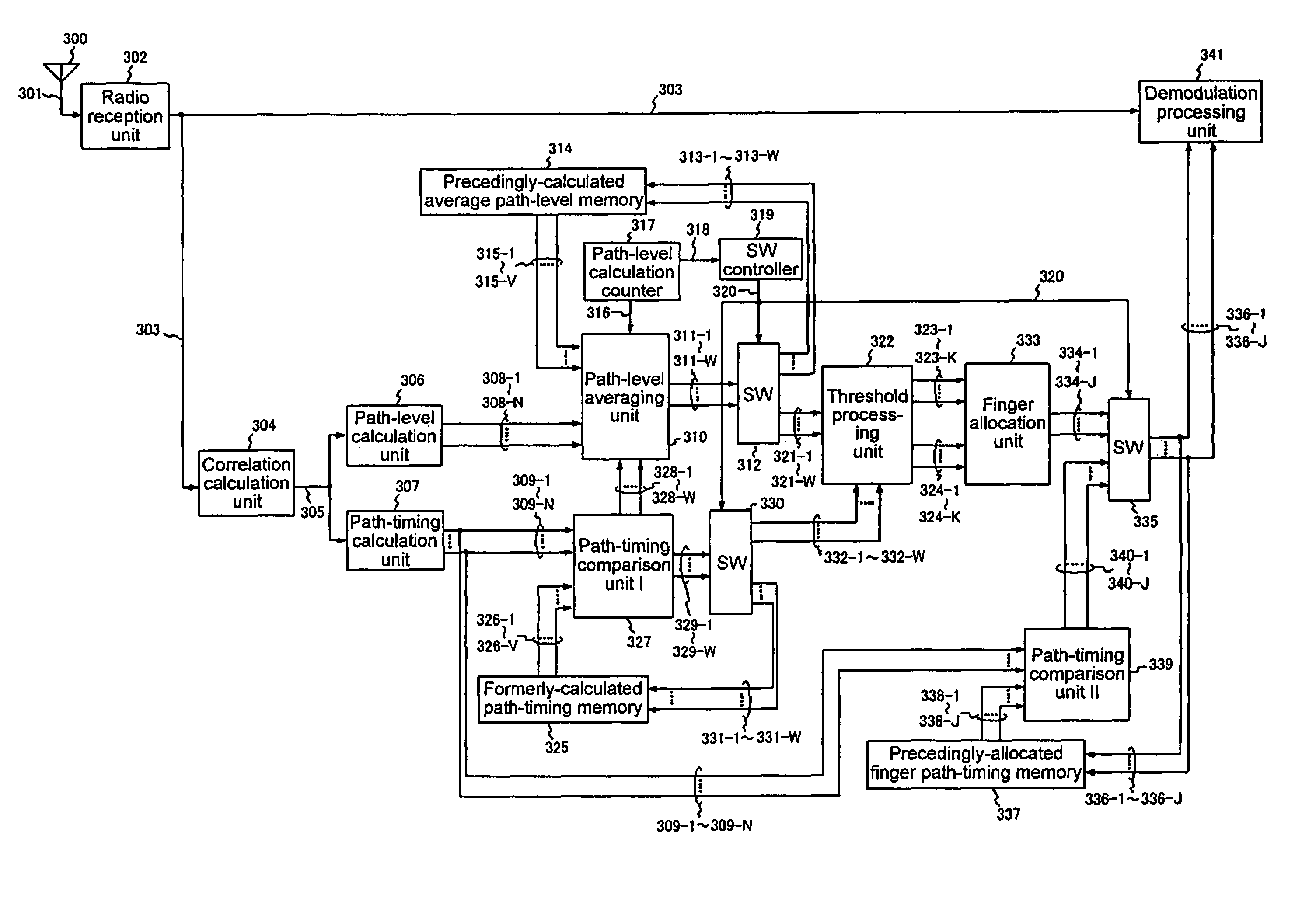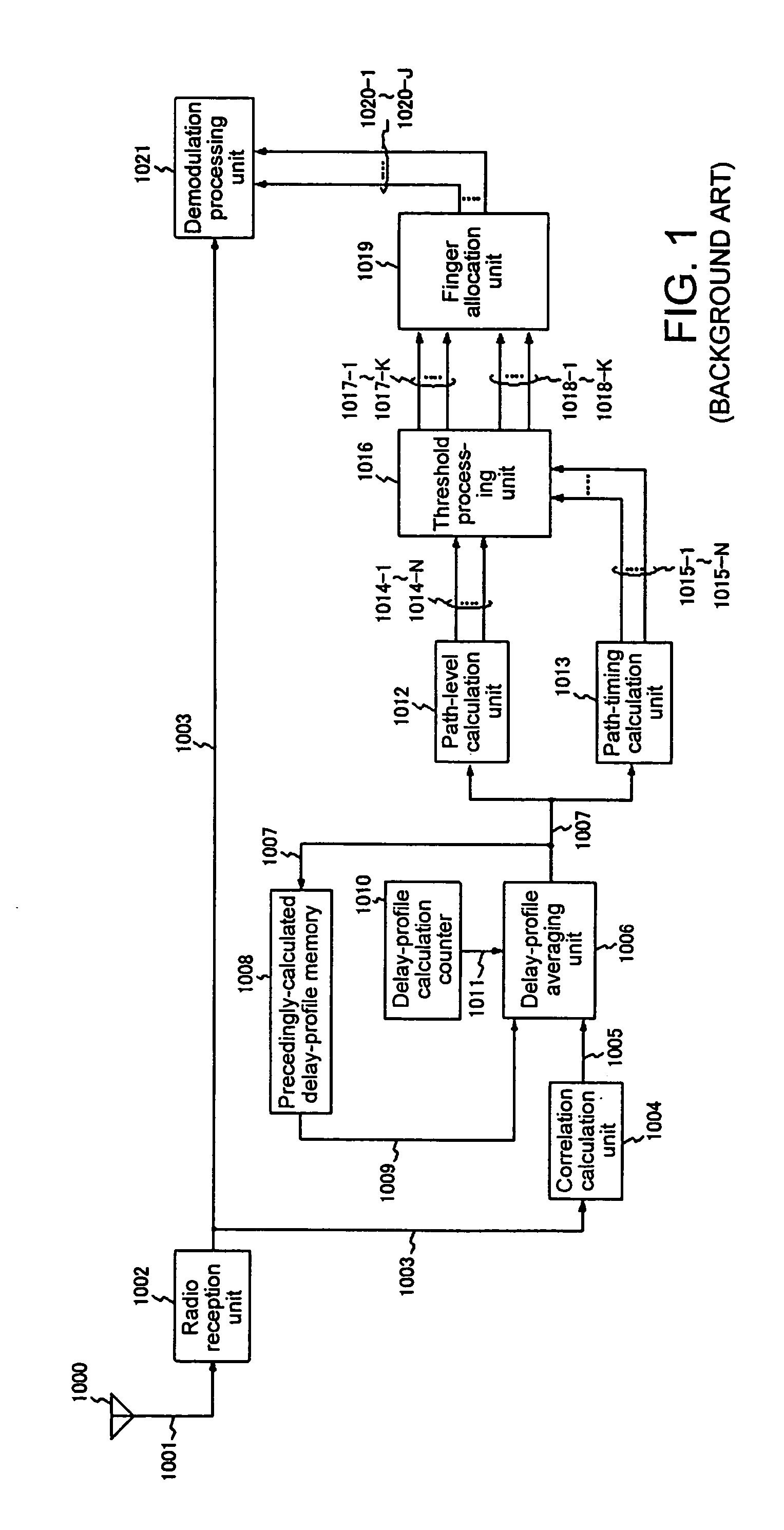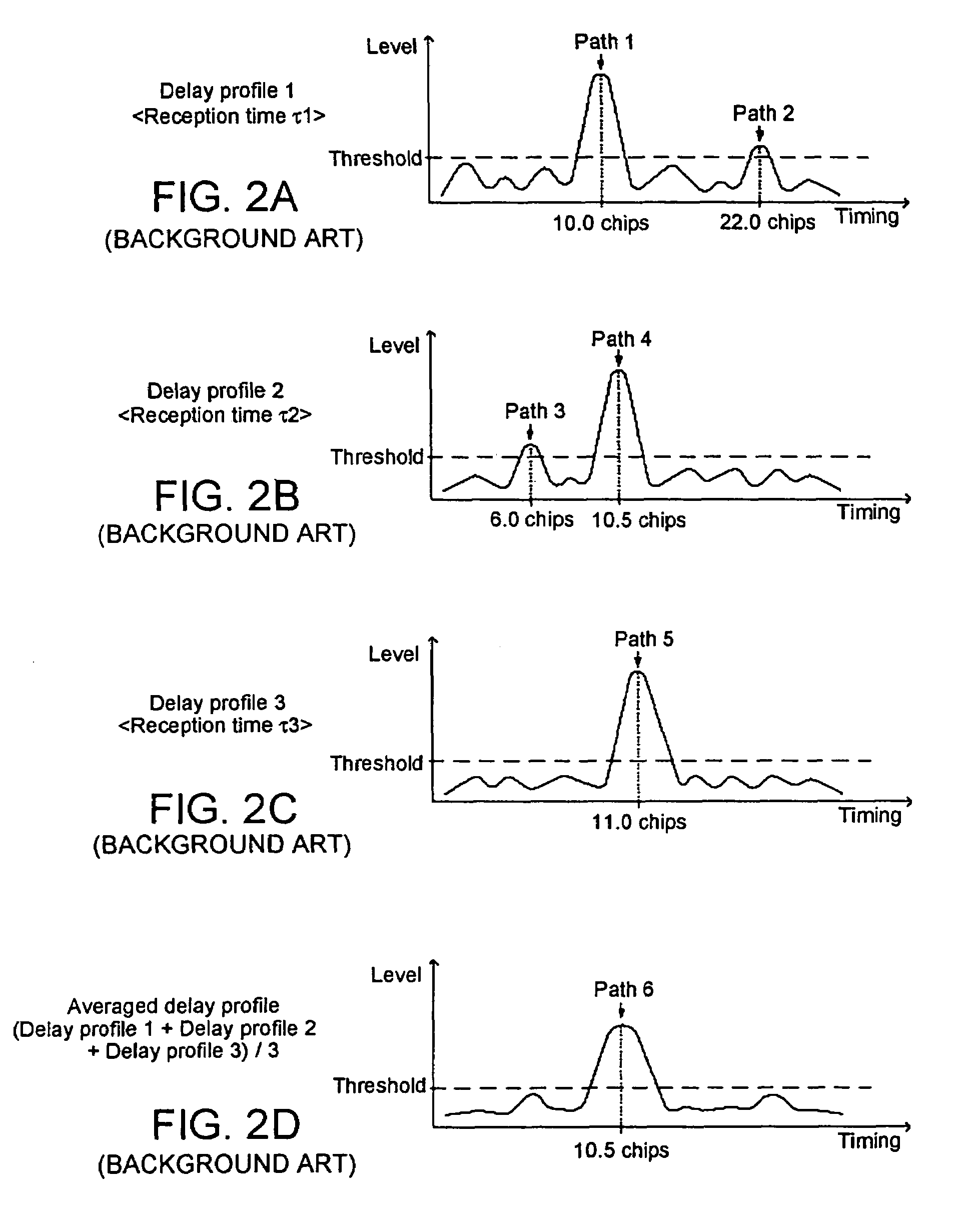Method and apparatus for CDMA signal reception
a signal and signal processing technology, applied in the field of signal reception methods, can solve the problems of high path of reception level, inability to properly achieve despatch, and so as to enhance the detection accuracy of paths and avoid deterioration of reception characteristics.
- Summary
- Abstract
- Description
- Claims
- Application Information
AI Technical Summary
Benefits of technology
Problems solved by technology
Method used
Image
Examples
first embodiment
[0041]The CDMA reception device according to the present invention illustrated in FIG. 3 is, in order to separately execute the averaging process of path levels and the update of path timings, provided with: antenna 100 for receiving a radio signal transmitted from a sending end; radio reception unit 102 for converting a received radio signal into a baseband signal 103; correlation calculation unit 104 for calculating the correlation value of the baseband signal 103 and providing a delay profile 105; path-level calculation unit 106 for calculating N path levels 108-1 to 108-N on the basis of delay profile 105 provided from correlation calculation unit 104; and path-timing calculation unit 107 for calculating N path timings 109-1 to 109-N on the basis of delay profile 105. The number N is a natural number. A correlation calculation unit provided with a sliding correlator and a matched filter can be employed as correlation calculation unit 104 as with the conventional CDMA reception d...
second embodiment
[0070]Explanation is next presented regarding the CDMA reception device according to the present invention.
[0071]While the CDMA reception device shown in FIG. 3 effects the averaging of path levels through the use of a forgetting factor, the CDMA reception device of the second embodiment shown in FIG. 5 is useful in the case where moving averaging is applied for the averaging process of the path levels. The device shown in FIG. 5 differs in construction from device shown in FIG. 3 in that precedingly-calculated average path-level memory 116 is replaced with path-level memory 216 and precedingly-calculated path-timing memory 118 is replaced with path-timing memory 218. For reference, the meanings of path numbers N, K and J in the device shown in FIG. 5 are the same as those in the device shown in FIG. 3.
[0072]The CDMA reception device shown in FIG. 5 is provided with antenna 200 for receiving a radio signal; radio reception unit 202 for converting received radio signal 201 to baseban...
PUM
 Login to View More
Login to View More Abstract
Description
Claims
Application Information
 Login to View More
Login to View More - R&D
- Intellectual Property
- Life Sciences
- Materials
- Tech Scout
- Unparalleled Data Quality
- Higher Quality Content
- 60% Fewer Hallucinations
Browse by: Latest US Patents, China's latest patents, Technical Efficacy Thesaurus, Application Domain, Technology Topic, Popular Technical Reports.
© 2025 PatSnap. All rights reserved.Legal|Privacy policy|Modern Slavery Act Transparency Statement|Sitemap|About US| Contact US: help@patsnap.com



